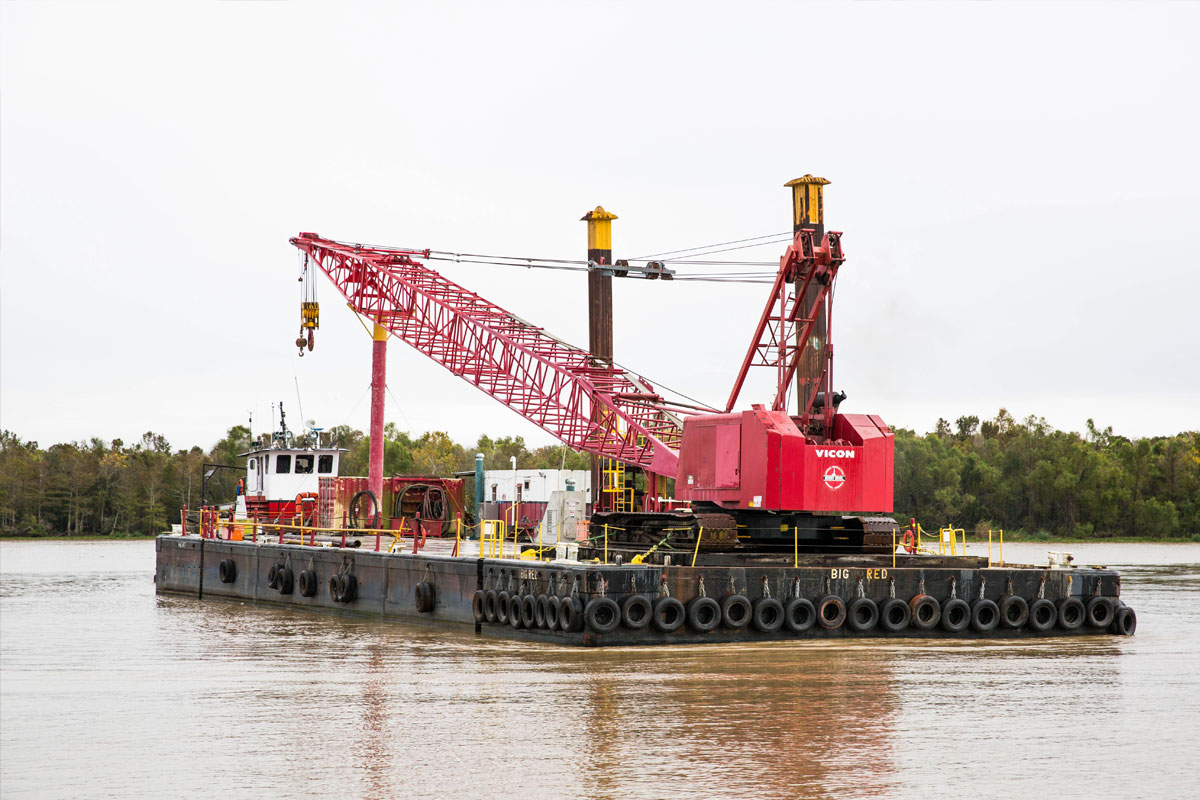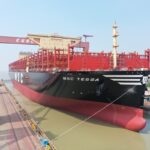If you’ve ever wondered about the intricate world of crane barges and their indispensable role in maritime operations, you’re in for a treat. From their humble beginnings to the cutting-edge technology they now boast, crane barges have a fascinating history and evolution that will leave you intrigued. But that’s just the beginning. As we investigate further into the design, operation, and various applications of these versatile vessels, you’ll uncover a world of possibilities that showcase their importance in today’s interconnected global economy. Stay tuned for an extensive exploration of crane barges that will shed light on their unparalleled significance in modern maritime industries.
History and Evolution
The history and evolution of crane barges can be traced back to the early 1900s when the need for efficient cargo handling solutions arose in maritime industries. Crane technology played a significant role in the development of these specialized vessels. Maritime engineering advancements led to the integration of cranes onto barges, revolutionizing cargo operations at sea.
Initially, crane barges were simple in design, with basic crane structures mounted on flat decks. As demand grew for more sophisticated lifting capabilities, innovations in crane technology were incorporated into barge designs. This evolution saw the emergence of specialized crane barges equipped with advanced hydraulic systems, telescopic booms, and increased load capacities.
The integration of modern crane technology with maritime engineering principles has resulted in highly efficient and versatile crane barges that can handle a wide range of cargo types.
These vessels have become indispensable in port operations, offshore construction projects, and marine salvage operations, showcasing the continuous evolution and adaptation of crane barge technology to meet the demands of the maritime industry.
Design and Components
Design and Components of crane barges play an essential role in their operational efficiency and effectiveness in handling various types of cargo. The design features of a crane barge are vital in determining its functionality. Structural components such as the hull, deck, and crane system are key elements that contribute to the barge’s overall performance.
The hull of a crane barge is designed to provide stability and buoyancy while accommodating the weight of cargo and equipment. The deck layout is strategically planned to optimize space for cargo storage and crane operations.
Additionally, the crane system, including the boom, hoist, and controls, is engineered to lift and move heavy loads with precision and safety.
Key design features like load capacity, stability enhancements, and maneuverability are integrated into the crane barge’s construction to guarantee it meets industry standards and operational requirements.
The combination of these design elements and structural components allows crane barges to efficiently handle a wide range of cargo types, making them indispensable assets in maritime operations.
Operation and Functionality
To efficiently operate a crane barge and secure its functionality in handling diverse cargo, a systematic approach to load management and crane operation is essential.
Crane barges are equipped with sophisticated lifting mechanisms that allow for the safe and efficient movement of heavy loads. These lifting mechanisms, often hydraulic in nature, provide the barge with the capability to lift and position cargo with precision.
Moreover, stability features play an important role in guaranteeing the safe operation of a crane barge.
Ballast systems are used to adjust the vessel’s weight distribution, enhancing its stability during lifting operations. By carefully managing the ballast and monitoring the barge’s stability, operators can prevent accidents and secure the smooth handling of cargo.
Applications and Industries
For various maritime operations, crane barges serve as versatile assets, providing essential support in a range of industries.
In marine construction, crane barges are utilized for heavy lifting tasks such as placing underwater foundations, constructing bridges, and erecting offshore structures. Offshore drilling operations benefit from crane barges by facilitating the installation of drilling equipment and the movement of heavy materials.
In salvage operations, these barges play a significant role in lifting and removing wrecked vessels or cargo from the seabed. Their environmental impact is carefully managed to prevent harm to marine ecosystems during these operations.
Furthermore, crane barges offer logistical support in various industries by enabling efficient transportation services of goods and equipment. They excel in underwater installation projects, where precise lifting and positioning are essential.
Their adaptability and strength make them indispensable assets in industries that require heavy lifting capabilities in marine environments.
Advantages and Future Trends
With their robust capabilities and versatile functionalities, crane barges present numerous advantages across various industries. When it comes to cost efficiency, crane barges offer significant savings compared to land-based construction methods. The ability to transport heavy equipment and materials directly to the job site reduces the need for multiple transfers, saving both time and money.
Additionally, crane barges have a lower environmental impact as they can operate in waterways without disturbing land habitats or causing soil erosion.
Technological advancements are driving future trends in the crane barge industry. Automation and remote operation capabilities are enhancing efficiency and safety on these vessels. Market demand for crane barges is expected to increase as infrastructure projects grow worldwide.
The versatility of crane barges makes them essential for tasks such as bridge construction, offshore installations, and salvage operations. Investing in crane barge technology is key to meeting the rising demand for efficient and environmentally friendly marine construction solutions.
Frequently Asked Questions
How Are Crane Barges Transported to Different Locations?
To transport crane barges to various locations, barge logistics employ specialized transportation methods. These include tugboats, heavy lift vessels, and self-propelled barges. Each method is selected based on factors such as distance, water conditions, and equipment specifications.
What Safety Measures Are in Place for Crane Barge Operations?
When operating crane barges, safety measures such as regular crane barge inspections and thorough risk assessments are vital in mitigating operational hazards. These steps are essential to guarantee safe and efficient operations on the water.
Can Crane Barges Be Customized for Specific Projects?
Yes, crane barges can be customized for specific projects by adjusting crane barge design and incorporating specialized equipment. Tailoring the barge to project needs optimizes efficiency and safety. Consult with experts to guarantee precise customization.
How Are Crane Barge Crews Trained and Certified?
To become certified, crew members undergo rigorous training programs covering safety protocols, equipment operation, and emergency procedures. Responsibilities include maintaining equipment, adhering to regulations, and executing lifts with precision. Training guarantees crew readiness for diverse barge operations.
Are There Regulations for Environmental Impact During Crane Barge Operations?
When operating crane barges, regulations mandate environmental compliance. Impact assessments guarantee minimal harm. Crews must follow strict guidelines to protect marine ecosystems. Training covers spill response, waste disposal, and pollution prevention. Regular audits monitor adherence.






